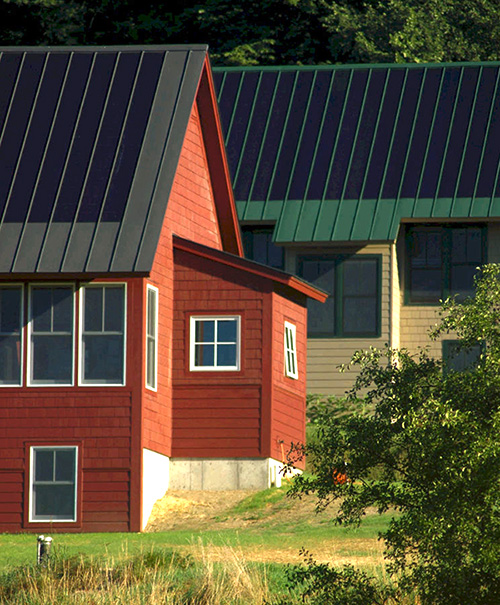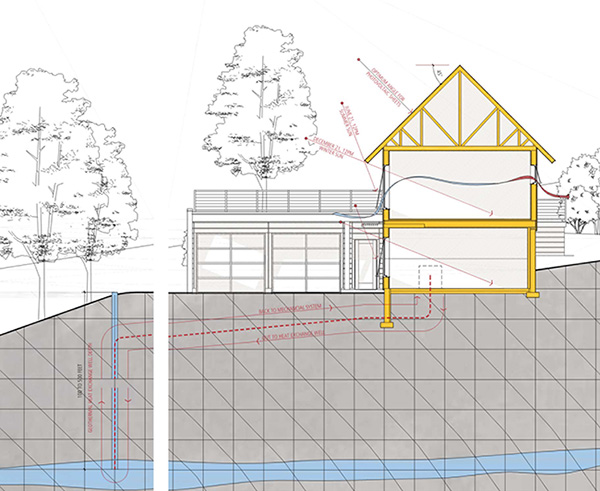Getting to Net Zero: the Power Generation
Once energy demand is addressed, through proper building orientation, maximizing solar gain, and reducing heat loss with a tight building envelope, we can turn our attention to the energy supply.
In most of our net zero homes, solar photovoltaic panels are used to generate onsite electricity. Photovoltaic panels can be mounted on stands in the landscape, or on the south-facing roof of the house (our preference).
In northern Vermont, the optimum pitch for roofs with stationary photovoltaic panels is approximately 40 degrees, or a 10/12 roof pitch. Most of our net zero homes connect to the electric grid. In summer, when there is often a surplus of usable electricity, the houses feed energy back into the grid, while during the cloudier winter months, the home may draw energy from the grid.

When it comes to heating, many of our houses rely on a combination of passive solar energy and geothermal heating systems. These geothermal systems typically pump fluid through a deep well, extract heat from the fluid via a heat pump, then return the cooled fluid to the well to be reheated by the earth. Often, the extracted heat is circulated through concrete floor slabs for radiant floor heating. We also commonly use solar hot water panels mounted on the roof, to heat hot water for domestic use.

We like to think of the net zero house not only as a mini-power plant, but also as a beautiful and healthy place to live. Think of the paradigm shift that would take place if all of our housing stock was designed to be self-sustaining, with onsite power and electricity generation. This is the net zero future.